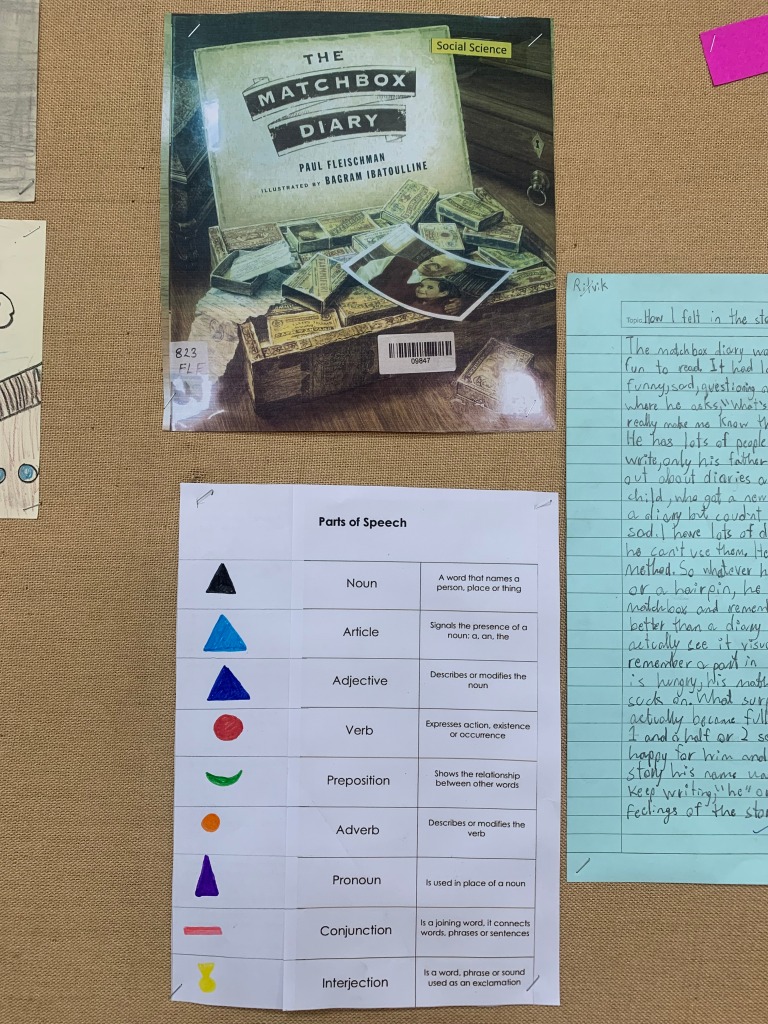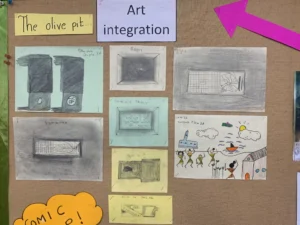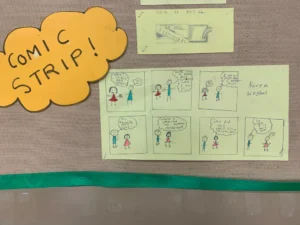TL;DR:
- Transdisciplinary units allow students to bring all facets of their learning together.
- Student agency increases student engagement.
- Students create in-depth work they are proud of.
I work for a school that follows the International Baccalaureate curriculum. This means that we follow a transdisciplinary approach, where learning transcends subjects. The concepts of student voice and choice spearhead the program of inquiry. This allows students to explore a deeper understanding of the topic at hand. Facilitators should provide learners with opportunities to explore a concept beyond the classroom. For this to be possible, teachers across specializations need to communicate and be prepared to organize meaningful learning experiences. For example, if I’m teaching migration as my unit of inquiry, the dance department took up famous dancers who found success after migrating. The music department explored how musical instruments and vocal styles change due to migration. The physical education team explored how migration influences sportspeople.
Each child absorbed different concepts from a variety of subjects, and they used the entirety of their knowledge to create work that they were proud of. Share on XThe Value of Transdisciplinary Units
I have realized the value of transdisciplinary teaching and learning as I’ve seen my students develop understandings that will last them a lifetime. Learning shouldn’t be an inch deep and a mile wide. Instead, all facets of a child’s life in school should complement their learning experiences, serving to drive home everlasting understanding.

One of the best teaching moments I’ve experienced recently was thanks to transdisciplinary learning practices. My unit was all about migration. I had to teach my students about why people migrate, how empathy is essential to understand a migrant’s plight, as well as the effect of migration on host countries. While I was confident in what I had to teach during my unit of inquiry, I wanted to use what students were learning in other spheres of their schooling to the maximum.
Integrating English
For English, I asked the students what they had learned related to the language during the year. They listed grammar concepts such as conjunctions, nouns, verbs, etc. Learners also listed the various forms of writing they had done, such as paragraph writing, picture compositions, letters, etc. Once we identified what we already knew, we decided to select the class’s overall favourite book, The Matchbox Diaries by Paul Fleischman. The students thoroughly enjoyed the story, illustrations, and choppy humour. Therefore, we would use the book as a base for everything else.
Student agency was vital here! While the students chose the book, this ensured that all our learning was integrated into migration. Students divided themselves into different groups as they wanted to showcase their understanding of the book in various ways that played to their strengths.
Learners were determined to add their favourite humourous quips and quotes to the board. They wanted to remember them and have a giggle whenever they looked at the board. So, they fanned through the book again and told me their favourite bits while I took prints of them. I then gave this group the prints and asked them to mark all the grammar concepts learned throughout the year with Montessori grammar symbols. Therefore, students had a good laugh reliving their favourite moments, and I was able to test and showcase their knowledge of Montessori symbols as well as their understanding of parts of speech.
A Splash of Art
The creative students in my batch wanted to showcase their favourite moments of the story through art. In their art classes, they had been learning about shadows and shading. The book had hard-hitting and beautiful illustrations in colour, so my students decided to create black and white pencil sketches of their favourite moments to depict the bitter-sweetness of the story. One courageous soul decided to create a comic strip depicting their most beloved events from the book. Another child knew of Warli Indian art and shaped an Indian interpretation of the migrants waiting at Ellis Island. The results were amazing. 
Learners had become knowledgeable about how to create comic strips in their ICT class. A few students decided to showcase their understanding through this medium on paper for a change.


Reflections of Another Time
The gifted writers in my class decided to pen down their reflections and emotions on paper. This was a takeaway from their Social and Emotional Learning classes. Their summaries and anecdotes served to bring the whole board together, giving the onlooker a clear picture of what the book was about and what the children were attempting to say through their transdisciplinary work. 
The End Was Just the Beginning
My students ended up creating the material for the entire board over a period of weeks, drawing from their transdisciplinary understanding to express themselves in a variety of ways. I needed to share the power of decision-making with my students. They did a great job of showcasing everything they had learned by imbibing the depth of transdisciplinary learning. Each child absorbed different concepts from a variety of subjects, and they used the entirety of their knowledge to create work that they were proud of.
One of the things that stood out to me was that when I provided learners with student agency, their hidden talents came to the fore. Had I only elected to put up writing work and VTRs on the board, some students would never get their work up there. However, when they chose the medium of submission, they created beautiful illustrations that earned their work a cherished spot on the board. It was wonderful to see their eyes light up with pride because they got a chance to show off talents that were unrelated to academia.
About Sanam Edwards
Sanam Edwards is a teacher in Gurgaon (India). She enjoys building the student’s voice and choice within the classroom environment while infusing her quirky sense of humour into daily activities. She’s an advocate for technology in the classroom and is constantly on the lookout for new ways to engage the students mentally and emotionally. She regularly blogs about her forays in the education sector at www.reviewmirror.in 


